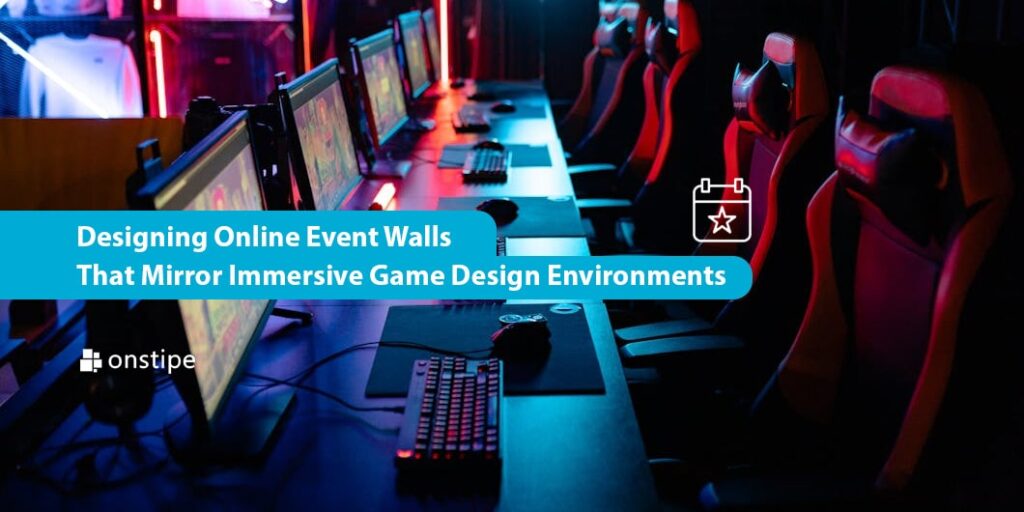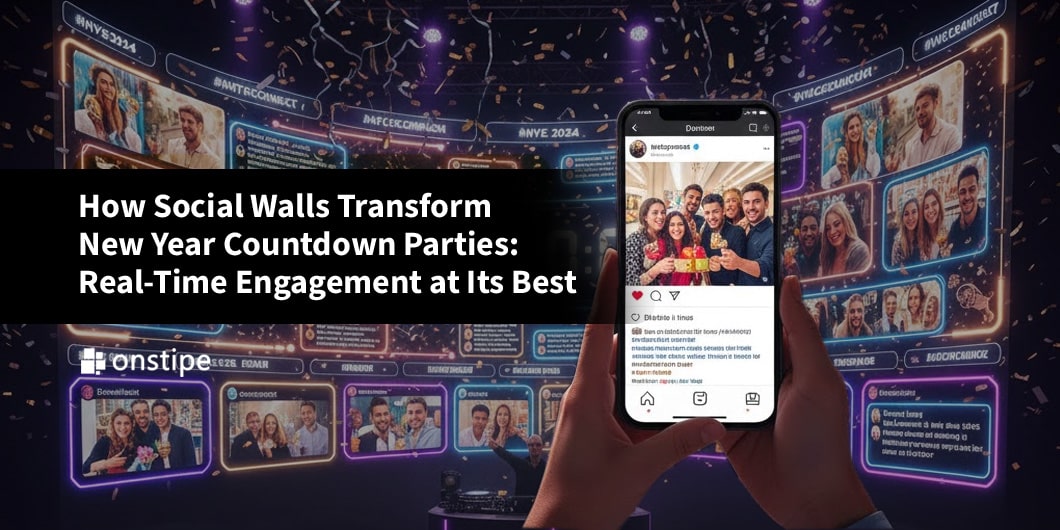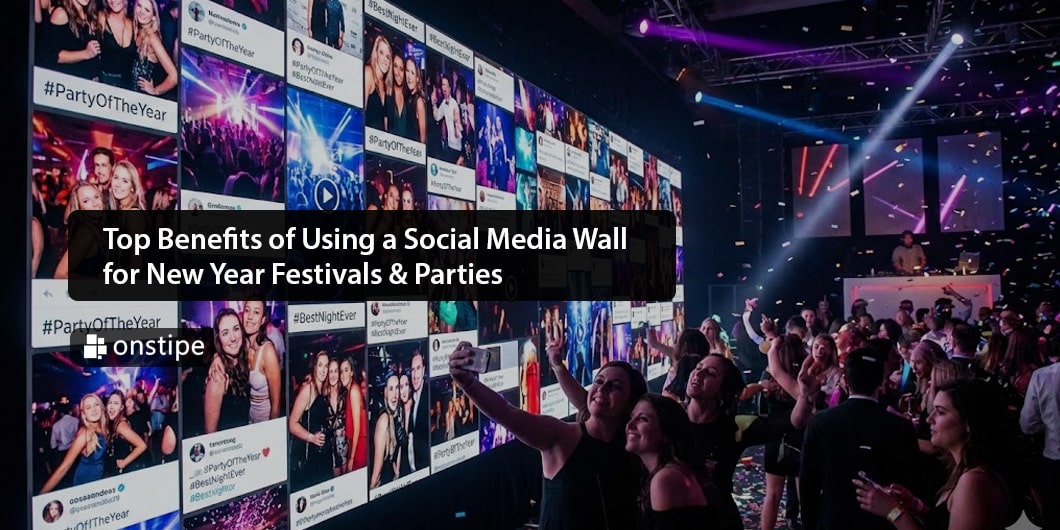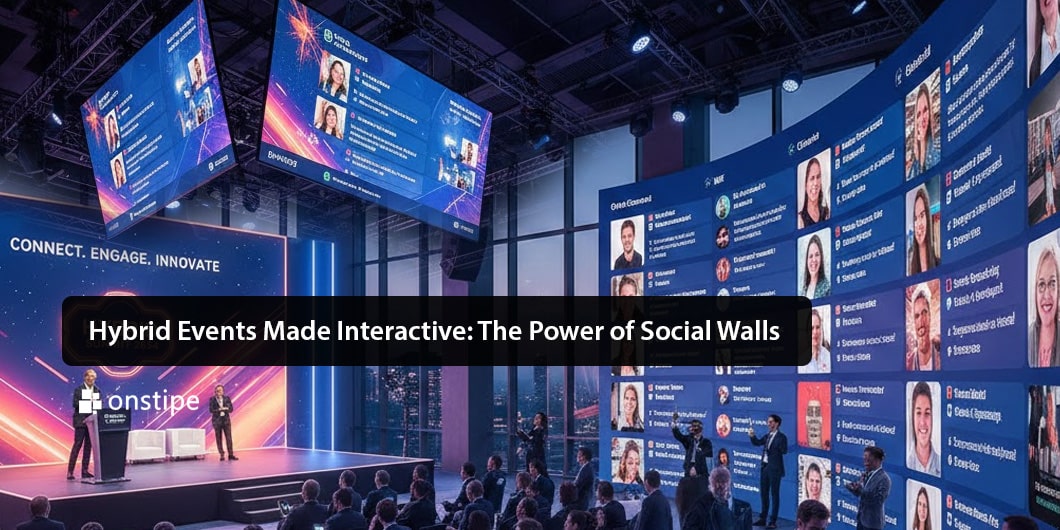Overlooked, the online event wall displays social media updates and announcements without action. This outdated idea is more akin to a cluttered bulletin board, inundating people with information.
We predict low engagement, limited communication, and missed opportunities for community building.
The solution is immersive game production, which engages online gamers. Game “sticky” settings provide more than information; they make players feel part of a universe. They foster curiosity, interaction, and connection.
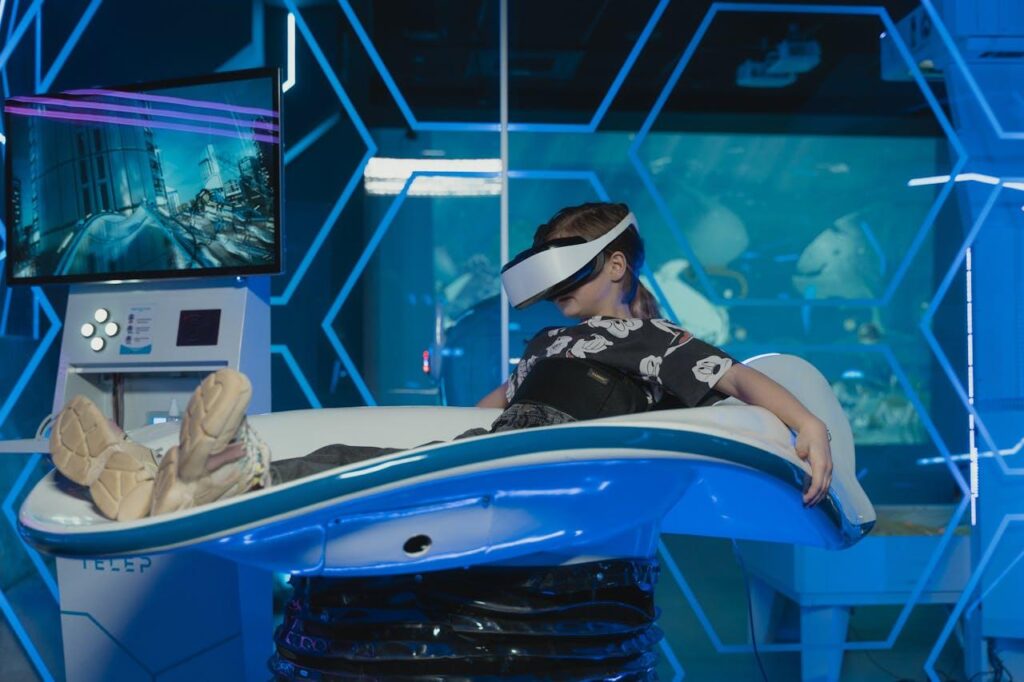
Source: Pexels
Make static event barriers dynamic with this blog. Spatial world-building, interactive aspects, gamification loops, and social presence can enhance the online event wall.
Creating a shared place and leaving a lasting impression go beyond passive consumption.
Core philosophy: From passive wall to active world
A game-inspired event wall isn’t built on a new feature; it’s built on a new way of thinking. To achieve this, we need to stop viewing the wall as a place to store information and start seeing it as a living, breathing space where people can connect with one another.
This fundamental perspective is what makes a world memorable, while a feed is easily forgotten.
Shift mindset: From information feed to interactive space
An event wall’s “information feed” is a straight stream of content that visitors passively receive. The new perspective is referred to as an “interactive space.” In this concept, the interface is defined as the world.
Now, content is not just a post to read, but a thing, place, or task to locate and complete. This moves design from information delivery to experience.
Goal: Drive engagement through environmental design
This unique method teaches and promotes specific behaviors. The setting is meant to inspire discovery, curiosity, and conversation.
Clear zones, interactive props, and social media aggregator enable consumers to connect with content, advertising, and most crucially, each other. Connecting and participating determines success, not site views.
Four pillars of game-inspired design
Four interwoven design pillars make a static wall immersive. These concepts work together to establish the environment, define user interaction, encourage desired behavior, and foster connections between people. It’s about applying intelligent design discipline, not just adding flair.
These basic ideas make modern digital experiences so captivating and are taught in professional workshops and game design colleges online. Creating a compelling and memorable digital experience requires mastering them.
This rigorous training helps event organizers think like world-builders rather than content administrators. This lets them purposefully steer the user journey and generate emotional investment, making the digital venue a significant event attraction.
Spatial design and world-building
Building a sense of place is what this pillar is all about. You create a three-dimensional virtual world that people can enter and explore, rather than a flat page. This makes the digital area feel real and alive.
- Themed environments: Replace plain backgrounds with 2.5D or 3D environments styled to match the event’s brand. Think of a futuristic hub for a tech conference, a peaceful town for a wellness retreat, or a cutting-edge art gallery for a creative festival.
- Dynamic elements: Use sound and light movements to bring the world to life. Add changing lighting, ambient background music, animated scenery, and weather effects to make the site feel less like a website and more like a destination.
- Zoned areas: Arrange materials in a logical manner by dividing the space into distinct areas. A “Sponsor Hall” can feature virtual booths, a “Networking Lounge” can serve as a space for conversation, and a “Resource Library” can provide a quiet area for reviewing papers and videos. This spatial logic makes navigation easy and encourages exploration.
Interactive “Content objects”
This pillar changes the way we view information as a real thing in the world. Information isn’t just words on a screen anymore; it’s an actual thing that people can locate, touch, and interact with. This changes passive consumption into active finding.
- From posts to props: Turn session schedules, sponsor logos, and user-generated content into real things that can be seen and touched in the world. A link to a session becomes an interactive sign on the wall, information about a sponsor transforms into a clickable virtual booth, and comments from attendees populate a digital message tree.
- Responsive feedback: Give immediate feedback for every move a person takes. An item should glow, make a sound, or start a small animation when the user clicks on it. This responsiveness makes exchanges satisfying and lets the user know that their actions matter.
- Embedded mini-games: To encourage more participation, incorporate simple and fun tasks directly into the environment. This could be a treasure hunt for sponsor logos, a trivia game at a knowledge kiosk, or a group puzzle that leads to an important statement.
Gamification and progression loops
According to Global News Wire, the global gamification market is expected to be worth over $32 billion by 2025, growing at a rate of more than 30%. The increasing number of mobile devices and internet penetration is fueling the growth of the gamification sector.
Gamification provides individuals with a method to organize and maintain motivation while engaging in an experience. You can change people’s behavior and encourage them to become more involved with the event’s material and community by setting clear goals and offering rewards for participation.
- Discovery quests: It give users clear goals to reach, like “Visit 5 sponsor booths,” “Leave a comment on the photo wall,” or “Connect with 3 other attendees.” These quests make it easy to find your way around and make sure that users see important parts of the event.
- Reward systems: Offer real benefits to motivate people to take action. Give points, badges, or special items for finishing quests, and let everyone see your progress on a public leaderboard to make it fun to compete.
- Unlockable content: Utilize engagement goals to secure exclusive content and create strong incentives. Attendees may not be able to view a keynote speaker’s slides, participate in a special networking session, or access bonus content until they have thoroughly explored and interacted with the event area.
Social presence and co-creation
This last pillar is all about making the digital area feel like a real place where people can work together. It’s about letting people know they’re not alone and providing them with the tools to work together to change the world and build a genuine sense of community.
- Avatar representation: Display guests as simple, unobtrusive avatars that move around the room in real-time. Seeing others in a space quickly makes it feel more alive, social, and full of people.
- Proximity-based interaction: Set up social features that work when avatars are close to each other or certain items. This could open a secret chat window or a video call, making it easier for people to have the kind of “hallway conversations” that are important for real-life events.
- Collaborative canvases: Provide a space for people to leave their mark that everyone can see. This could be a digital whiteboard for generating ideas, a graffiti wall for expressing yourself creatively, or a picture mosaic that evolves as more people contribute to it during the event.
The future of digital events
Finally, the online event wall has evolved from a static “wall” to a dynamic “world.” Game design’s four key ideas—building worlds in space, adding compelling components, converting games into real-life experiences, and fostering social interactions—enable this change.
Together, these aspects make information organized and captivating.
This strategy works, not just looks good. It transforms passive scanning into active engagement, creates memorable experiences for participants and sponsors, and fosters community by providing a space for interaction and collaboration.

Source: Pexels
Future online events will focus on creating engaging venues. Organizers and designers do more than teach. They must create inviting universes. Stop erecting walls; build worlds.

